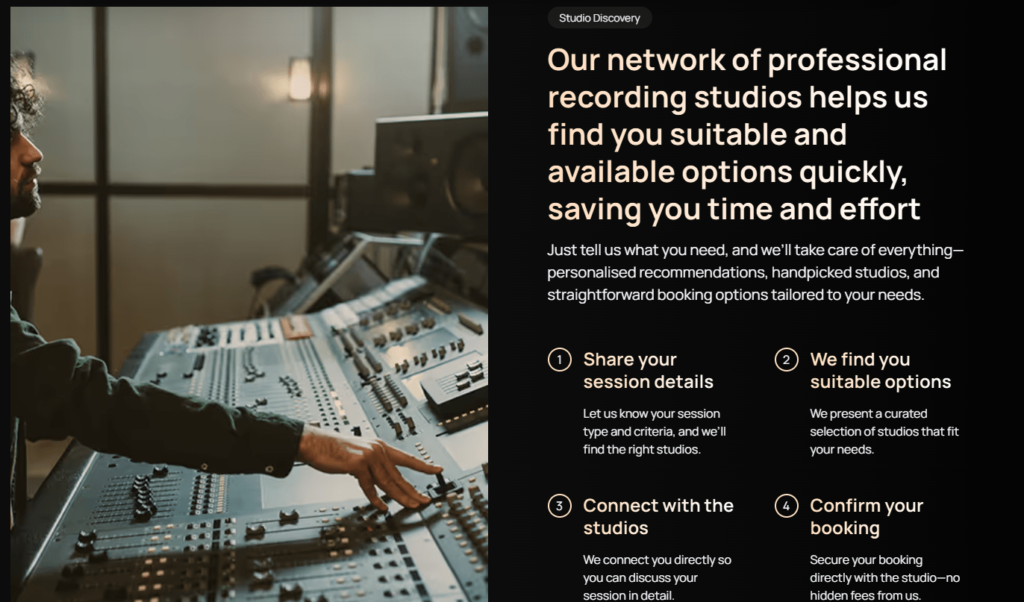ProStudioTime has written this article below all about studio time and what it means for an artist to record music in 2025. Our take? No longer do you require an entire team to get a track published!

by ProStudioTime
Not too long ago, making a record meant locking out a studio for weeks, sometimes months. Artists would move in, engineers would wire up the rooms, and the entire process would unfold in one place, often from writing to mixing. It was immersive, intense, and expensive.
That still happens, but it’s no longer the norm.
Today’s sessions are shorter, more focused, and more varied in purpose. One booking might be about writing new material, another about cutting a vocal, another for tracking strings. Artists now work in phases, often track by track, and each session tends to have a clear, singular goal. Studios have had to adapt accordingly.
This isn’t a story of decline. It’s a story of evolution. And it reflects the reality of how music is made today.
Shorter sessions, sharper focus
Instead of multi-week lockouts, artists now book two, three, maybe five days at a time. Some sessions are shorter. Few are longer. This shift isn’t just about budget; it’s about working style.
Modern artists tend to structure their projects incrementally. They might start with a few topline writing sessions, return later to record final vocals, and then line up studio time to track live strings or other acoustic layers. The process is modular, built in focused stages, often across different cities, collaborators, and timelines.
Studio time today is less about “let’s make a record” and more about “let’s get this part done.” Each session is a specific piece of a larger puzzle. Studios that can support this kind of flexible, stop-start momentum are becoming essential to how records get made.
Writing sessions: fuelling modern music
Music has become more collaborative than ever. These days, it’s not unusual to see five, six, even ten writers credited on a single track. As the creative process has expanded to include more co-writers, producers, and topliners, writing sessions have become one of the most common types of studio bookings.
Whether it’s a one-off session with a producer or a multi-day writing camp, these sessions rely on environments that encourage flow and interaction. Artists and their teams need ample control rooms or writing spaces where larger groups can collaborate comfortably, without feeling cramped or restricted.
But more than just space, inspiration plays a central role. Sometimes it’s the studio’s unique collection of instruments or vintage gear. Other times, it’s the ambience, the layout, the natural light, the mood set by ambient lighting, or simply the overall feel of the room. The right creative environment doesn’t just support the process; it actively shapes it. Studios that understand that vibe matters just as much as equipment are the ones that consistently get called back.
Vocal sessions and the rise of the solo artist
In today’s music landscape, the solo artist is more dominant than ever. Whether it’s Adele, RAYE, or Little Simz, what ultimately defines the sound and connects with audiences is the voice. It’s the focal point of the entire production. No matter how layered or polished a track is, if the vocal doesn’t land, the song won’t either.
A great vocal can carry a track. A bad one can sink it. That’s why the vocal session is one of the most critical stages in modern music production. Artists need a studio with the right mic chain, the right atmosphere, and an engineer who knows what they’re doing. It’s not just about recording. It’s about delivering a performance that stands up to everything else in the mix.
On the road and on the clock
Perhaps the most dramatic change in recent years is the collapse of the traditional timeline. Recording used to happen first. Then came promo. Then the tour. These were distinct phases.
Now, everything happens at once.
Artists are under constant pressure to release new material and stay visible—on streaming platforms, on socials, in the press. That means recording can’t be boxed into its own window. It has to fit around everything else.
Sessions are now squeezed between live shows, dropped into gaps between promo stops, or planned while passing through a city on tour. It’s common for an artist to record vocals in Paris on a Monday, co-write in Berlin on Wednesday, and track strings in London by the weekend.
For studios, this means two things: they have to be easy to find, and even easier to book. Being responsive and available, sometimes at short notice, is now a real competitive advantage.
Big rooms still matter for the right jobs
The shift to shorter, modular bookings hasn’t made big studios irrelevant. Quite the opposite. Studios with large tracking rooms are more valuable than ever, just in a different context.
When a project calls for live strings, horns, choirs, or anything that needs space, producers seek out specialist rooms with the acoustics and infrastructure to deliver. These sessions are often booked for a single day or two, used to capture essential elements that can’t be replicated in smaller setups.
In that sense, big rooms have become high-impact, high-precision tools. They are used only when necessary, but they are absolutely vital when they are.
What artists actually need today
At the core of all this evolution is one constant: artists still need studios. But the type of session, the timing, and the expectations have changed.
What matters most today is:
- Fit for purpose, whether writing, vocal, or tracking
- Short, focused availability windows
- Inspiring, collaborative environments
- Fast, transparent communication
- Trust in both the space and the team running it
What they don’t need is to waste hours searching, chasing replies, or guessing if a space is right for them.
That’s also why many artists now rely on services like ProStudioTime, which connect them with studios that fit their specific session needs. In a process that’s often squeezed between tours and travel, having quick access to the right space makes all the difference.
Final thought
Studio sessions aren’t vanishing. They’re evolving.
What used to be multi-week marathons are now strategic, focused bursts of creativity. Artists are still recording—more than ever—but they’re doing it differently. Shorter sessions. Clearer goals. Faster turnarounds. Fewer assumptions.
Studios that recognise this shift and adapt to meet the needs of today’s artists aren’t being left behind. They’re leading the charge.



